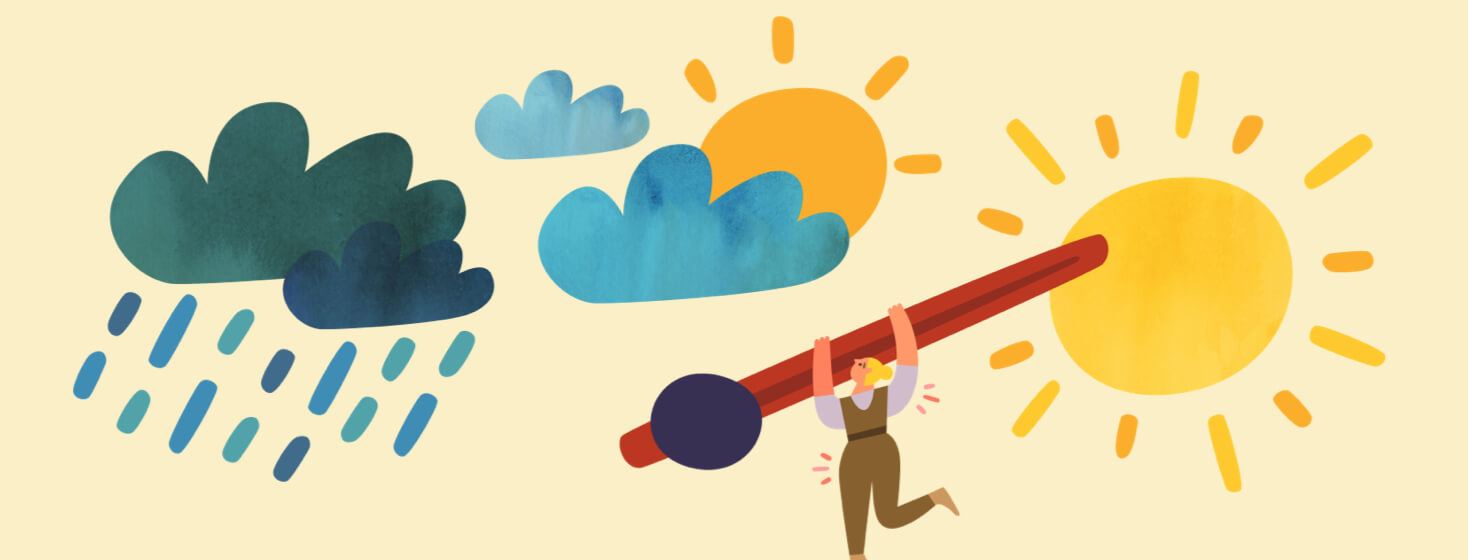Psoriatic Arthritis and Barometric Pressure: Does it Really Make a Difference?
While there isn’t a lot of research to support a connection between psoriatic arthritis and barometric pressure, there sure are a lot of us who feel it. I have spent many years talking with other inflammatory disease patients and the consensus is that barometric pressure does indeed make a difference.
Some find their bodies more sensitive to higher pressure, while others are unable to tolerate lower levels. Then there are those who feel every change, high and low.
My experience with barometric pressure change
The first time I noticed the impact that barometric pressure could wreak was when I was while living in Denver, Colorado. Achy, upon waking up, I slowly moved from my bed to the living room. As the day progressed, my pain increased.
My joints felt like they were being pried open with pliers. My skin was on fire. My muscles felt like they were pulling away from my body, and fatigue held my body hostage. Unable to withstand the pain, I began praying for it to end.
Then without notice, thunderstruck loudly, and rain began to fall. As quickly as the storm hit, my pain began reducing, and within a few minutes, I felt good as new. After 18 months of feeling like I was dying with every storm that made its way over the Front Range, my body needed a break.
Finding a climate that works for me and my PsA
I returned to Arizona. This is the state that everyone says is the best for a person with arthritis. And it was, for a moment. We moved back in the spring when the weather was warm and calm. I felt human again and had hope of not losing so much time to weather-related pain.
Then came Arizona’s famous summer monsoon storms. The combination of extreme heat with high humidity, hurricane-strength winds, and rain (if you were lucky) kicked my rear. Unable to function, I would spend most of my summer inside writhing in pain. Even though Arizona offered a drier climate, the severity of change when storm fronts moved in was more than my body could tolerate.
Moving to Southern California a decade ago was a welcome change. There is always a breeze. Living an hour inland from the coast has its perks. Morning marine layers that take hours for the sun to burn off keep temperatures cooler. Instead of only having a few good weeks, I only suffer from a significant pressure flare for a few weeks per year.
More good days
My good days grew significantly. After not spending time at the ocean in over a year, my husband booked a San Diego oceanfront condo for a much-needed vacation this past spring. Before this getaway, I knew that my body significantly reacted to high and low-pressure fronts. High pressure triggers migraines, fatigue, joint pain, and brain fog. In comparison, low pressure triggered pain mostly in my joints and muscles.
Upon returning home, I realized why San Diego is yet another top-rated place to live for those with arthritis. My body felt great while on vacation. I was able to sit up longer. My joints hurt less. And the biggest surprise of all was that the ring of inflammation surrounding my ribcage had also decreased.
We live two hours north of the area, as we reached the halfway point, I felt the ring return and told my husband that it was time for another vacation! So, does barometric pressure really make a difference? It depends on who you ask! And if you ask me, the answer is yes!
How does barometric pressure affect your body?

Join the conversation